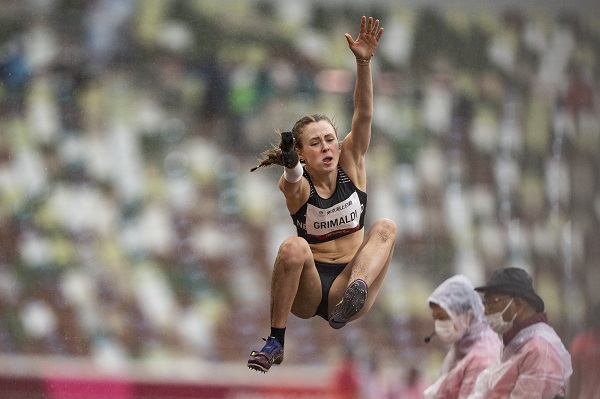High Performance Sport New Zealand’s Sara Richardson has been the two track and field athletes’ Performance Nutritionist for the last seven years and says her work with them for Tokyo has some significant differences from previous campaigns.
“My biggest role is looking after their nutrition needs from a wide perspective. Ultimately it is all about performance, but you can’t have that without looking after your wellbeing and long term health,” Sara explains.
“It’s about looking at their foundation or baseline nutrition. What they are doing on a day to day basis; what they are doing to stay healthy and meet all their needs for their age and stage as female athletes; are they having enough calcium, enough carbs, enough quality protein?”
But the build-up to Tokyo saw things shift in a few different ways.
The first was the impact of COVID-19 which saw the 2020 Paralympic Games delayed and overseas travel off the agenda, forcing the two Dunedin-based athletes to spend the winter training in the deep south.
“We put a big emphasis on immunity, partly due to the threat of COVID and partly due to the Dunedin winter which they were not used to. With that comes exposure to winter coughs, flus, bugs, etc. They would usually be overseas training and competing somewhere warmer.”
Sara says people can’t literally boost their immune system but it is useful to ask the question, ‘what can we do from a nutrition point of view to ensure that they don’t miss training and that their immune system was as strong as it could possibly be come Tokyo?’
Another important change of focus for Holly and Anna was on energy availability.
Sara credits the work of fellow HPSNZ Performance Nutritionist Christel Dunshea-Mooij with Rowing New Zealand’s female high performance athletes for this approach and its many benefits.
Energy availability is described as ‘the energy available to the body – from food – after the costs of exercise have been accounted for.’ In other words, what’s left over to run your body for the day. Christel’s research among rowing’s elite female athletes discovered that many were under-fuelling, sparking a shift in nutritional approach in that programme.
“We were able to filter to other athletes all of that amazing work that she (Christel) had done. We worked really hard to pull back on using body weight or skin fold or body composition as a measure of how well someone was fuelling. It was a really important shift.”
“You want athletes to eat the right amount of quality fuel for their particular needs. It can be easy to focus on being a certain physique and potentially sell an athlete short on the amount of fuel or energy they need to consume.”
Sara says Anna and Holly are pretty robust. They survived the Dunedin winter unscathed fuelled up for their successful campaigns in Tokyo.
“They worked really hard. Everybody would agree it was more challenging with the impacts of COVID and having the Games postponed. They were both amazing at flipping it on its head and recognising the opportunity to train at home in a familiar environment. They are both really resilient.”
“I’m a very small cog in their wheel but I felt privileged to be part of their team.”

